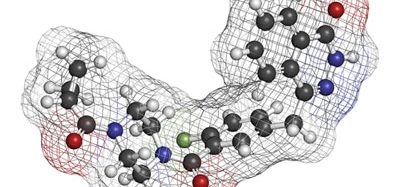Alzheimer’s genetic variants connected with microglia function
Posted: 12 October 2023 | Ellen Capon (Drug Target Review) | No comments yet
Researchers pinpoint connections of risk variants with microglia functions that are important for Alzheimer’s disease (AD).


Published in Nature Genetics, scientists from the University of North Carolina at Chapel Hill and the University of California, San Francisco discovered the connections of risk variants with functions in microglia and how they might contribute to Alzheimer’s disease (AD). Microglia are the resident macrophages of the central nervous system that play key roles in brain development, and physiology during life and ageing.1 The researchers found thousands of genetic variants in the genome in the development of AD. Most of these variants are located in genomic regions that do not code for proteins and are hence termed ‘non-coding variants.’
Although non-coding variants have been increasingly appreciated for their essential role in controlling gene expression across cell types and tissues, scientists find it difficult to match them to the genes they regulate, the effects on AD-related functions and thus the individual risk of contracting AD.
Overcoming this challenge, Yun Li, professor of genetics and biostatistics in the UNC School of Medicine and UNC Gillings School of Global Public Health said: “Our study focuses squarely on the critical genomic regions that are important for regulating microglia cells. These variants and regions we’ve uncovered will serve as a great starting point for conducting further experiments in microglia.”
Analysis of microglia
Dr Li and Yin Shen, PhD, associate professor at the Institute of Human Genetics and the Department of Neurology at UC-San-Francisco, and their colleagues, including Li Gan’s group from the Helen and Robert Appel Alzheimer’s Disease Research Institute, Weill Cornell Medical College, undertook an in-depth analysis in microglia of potential functional regions containing genetic variants associated with AD. The team identified 181 new regions of interest that contained 308 prioritised variants which previously were not thought to influence AD.
To prioritise risk variants and their residing potential functional regions, named candidate cis-regulatory regions (cCRE), in microglia, Li and her team began with 37 genetic loci associated with AD and conducted a process called fine-mapping. Studying one locus in succession, they examined the associated variants with a focus on epigenetic signatures and three-dimensional (3D) genome interaction annotations which indicate their probability of functioning in microglia.
After the team had prioritised variants most likely to exert their effect on AD through gene regulatory function in microglia, they carried out CRISPR interference (CRISPRi) screening experiments to pinpoint the specific regions affecting microglia gene expression. For this, they used human pluripotent stem cell-differentiated microglia.
This epigenomic editing technology allowed the scientists to ‘perturb’ candidate regions to understand whether any tested genomic regions can impact downstream gene expression. The finding of this was that turning off one region often impacted a “whole neighbourhood” of genes.
Dr Li stated: “We should be asking what the targeting gene or genes of these variants are affecting the microglia. Sometimes, one variant may affect the expression of multiple genes in the neighbourhood.”
Prime editing
However, multiple AD-associated genetic variants may be held in each region, requiring the researchers to determine which variants are causal among the many that were identified through genetic analysis. This accuracy is essential for grasping the mechanisms by which non-coding variants contribute to the progression of AD.
Prime editing, a pioneering genome editing technique, was applied, enabling the scientists to introduce a single DNA base substitution at a time and to assess individual variant function at the TSPAN14 AD risk locus. This method allowed the team to identify a specific variant that is responsible for TSPAN14 expression, distinguishing it from another variant that is almost exactly correlated and in the same cCRE region.
Successful link to AD
Many later cellular processes are negatively impacted by the responsible variant, including the maturation of ADAM10 protein and soluble TREM2 shredding in microglia. Because all three aforementioned genes are risk genes for AD, this study links an AD non-coding variant to processes in microglia that are beyond control of gene expression.
Dr Li explained that the research findings will act as a new foundation from which other researchers can uncover more causal variants of AD. In turn this will predict disease risks and develop more effective therapies.
Looking ahead, Li, Shen and Gan labs will use more complex model systems that mimic the human brain, like human cerebral organoids, to further the analysis of AD risk variants.
References
- Hemonnot AL, Hirbec H, Hua J, Ulmann L. Microglia in Alzheimer’s Disease: Well-Known Targets and New Opportunities. Frontiers [Internet]. 2019 August 30 [cited 2023 October 6]; 11(233):20. Available from: https://doi:10.3389/fnagi.2019.00233
Related topics
DNA, Genome Editing
Related conditions
Alzheimer's disease (AD)
Related organisations
Univeristy of North Carolina, University of California (UC), Weill Cornell Medical College







